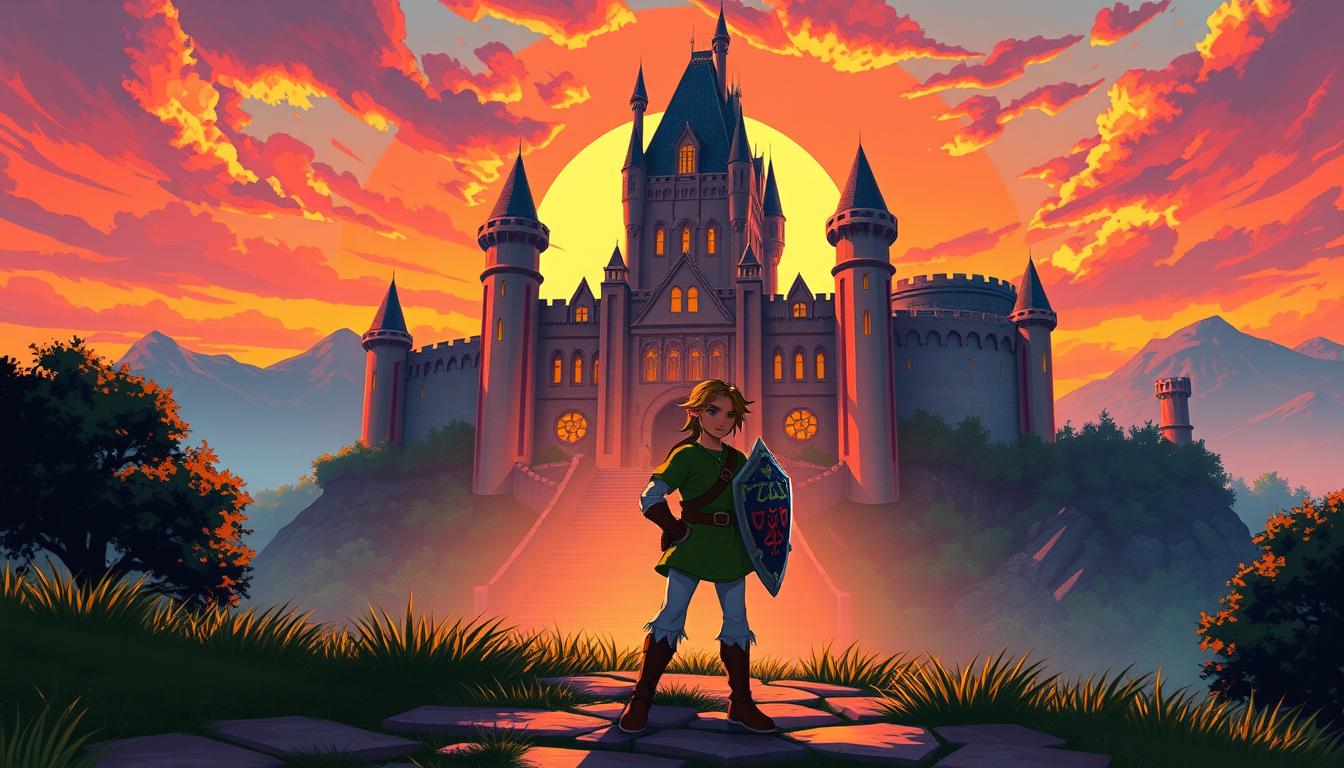The 1990s was a transformative period for the gaming industry, marked by significant technological advancements and the emergence of iconic franchises that continue to influence gaming today.
This era saw a pivotal shift from 2D to 3D gaming, with numerous titles becoming classics and shaping the future of the industry. The decade’s willingness to experiment with new ideas and genres laid the groundwork for modern gaming.
The impact of ’90s video games can still be felt, with many of their innovations and gameplay mechanics remaining relevant. This article will explore the most influential games ever made in the ’90s, highlighting their significance and enduring popularity.
Key Takeaways
- The ’90s was a revolutionary decade for gaming, marked by technological advancements and iconic franchises.
- The transition from 2D to 3D gaming defined the era, producing classic titles.
- ’90s games laid the groundwork for modern gaming across various genres.
- Many ’90s games continue to be celebrated for their impact on the industry.
- The influence of ’90s games can still be seen in contemporary gaming.
The Golden Era of Gaming: Why the 90s Changed Everything
The 1990s saw a seismic shift in the gaming landscape, with technological innovation and creative genius combining to redefine the medium. This decade was pivotal for the industry, laying the groundwork for the diverse and vibrant gaming culture we enjoy today.
The technical revolution of the ’90s was nothing short of remarkable. The transition from 2D pixels to 3D polygons opened up new possibilities for game design, enabling the creation of more complex and immersive gaming experiences. As noted by industry experts, “The shift to 3D graphics was a game-changer, allowing for more engaging and interactive gameplay.” This technical advancement was a hallmark of the decade, transforming the way games were developed and played.
From Pixels to Polygons: The Technical Revolution
The ’90s witnessed a significant leap in graphical capabilities, with the adoption of 3D graphics becoming a defining feature of the era. Games like Super Mario 64 and Tomb Raider showcased the potential of 3D gaming, pushing the boundaries of what was thought possible. This technical revolution was instrumental in shaping the future of the gaming industry.
The impact of this shift was profound, influencing game design and player experience. It allowed for the development of more sophisticated gameplay mechanics and the creation of richer, more detailed game worlds. As a result, the ’90s produced some of the greatest video games of all time, with titles like Super Mario 64 setting new standards for the industry.
The Birth of Iconic Franchises and Characters
The 1990s were also a time when iconic franchises and characters emerged, many of which remain beloved today. Franchises like Super Mario and Final Fantasy not only defined their respective genres but also contributed significantly to the decade’s gaming identity. Characters such as Mario and Sonic became cultural icons, symbolizing the ’90s gaming era.
The decade’s focus on innovation and creativity led to the development of new genres and gameplay mechanics, further enriching the gaming landscape. The influence of ’90s gaming can still be felt in the video games 1990s nostalgia that permeates modern gaming culture, with many contemporary games drawing inspiration from the classics of the era.
The Legend of Zelda: Ocarina of Time (1998)
Ocarina of Time’s impact on 3D adventure games is still felt today, making it a timeless classic. Released in 1998, this game not only set a new standard for the genre but also continues to influence game design.
Why It Defined 3D Adventure Games
The Legend of Zelda: Ocarina of Time introduced several innovative mechanics, such as Z-targeting, which have become staples in 3D adventure games. Its immersive world and engaging storyline have made it a beloved classic among gamers. The game’s 3D gameplay was revolutionary, providing a depth of experience that was unprecedented at the time.
Innovative Gameplay Mechanics like Z-targeting allowed for more precise control over interactions with the game environment, enhancing the overall gaming experience. This mechanic, in particular, has been widely adopted in subsequent action-adventure games.
Legacy and Influence on Modern Gaming
The influence of Ocarina of Time can be seen in many modern games, including other titles in the Zelda series and beyond. Its legacy extends to games like Final Fantasy VII, which also pushed the boundaries of storytelling and graphics in gaming. The game’s impact on the evolution of 3D gaming is undeniable.
Ocarina of Time remains a benchmark for 3D adventure games, with its memorable characters, story, and gameplay mechanics continuing to inspire game developers. Its continued popularity is a testament to its timeless appeal and the significant role it played in shaping the gaming industry.
Super Mario 64 (1996)
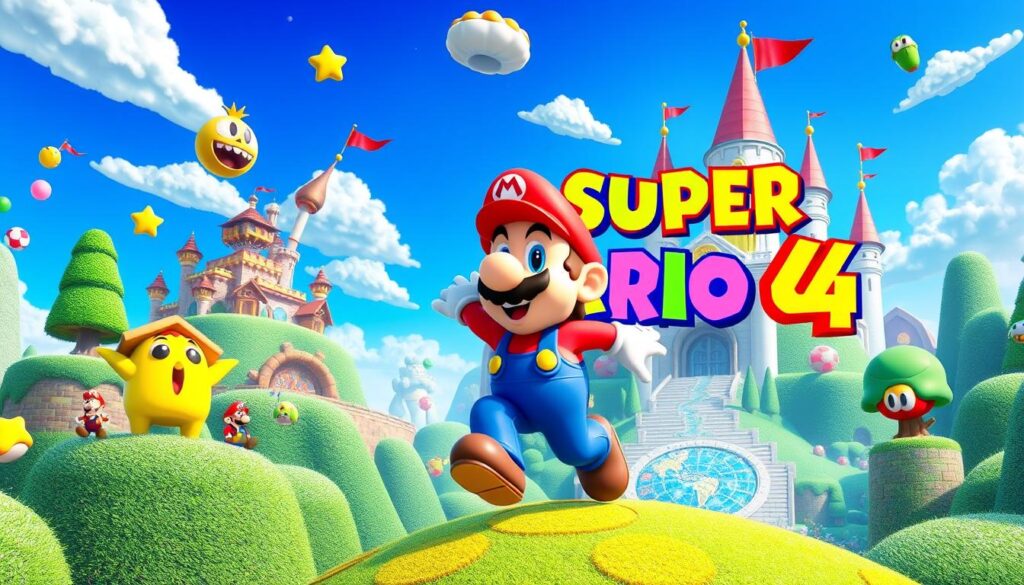
As a pioneering title, Super Mario 64 revolutionized the way 3D platformers were designed. Released in 1996, it set a new standard for the genre with its innovative 3D gameplay and charming worlds.
Revolutionizing 3D Platformers
Super Mario 64 was a game-changer in the world of platformers. It introduced a new level of freedom and exploration, allowing players to navigate through 3D environments with ease. The game’s camera system and control mechanics were particularly influential, providing a foundation for future 3D platformers.
Gameplay Innovations That Still Matter Today
The impact of Super Mario 64 can still be seen today, with many games drawing inspiration from its design. The game’s focus on exploration and discovery has been particularly enduring, making it a beloved classic among gamers. Super Mario 64’s influence extends beyond platformers, contributing to the broader evolution of 3D gaming.
Many consider Super Mario 64 one of the greatest games ever made, and it remains a must-play experience. Its charming worlds and memorable characters have become iconic in gaming culture, much like those found in Mario World. The game’s legacy continues to inspire new generations of gamers and game developers alike.
Final Fantasy VII (1997)

The impact of Final Fantasy VII on the gaming industry cannot be overstated, as it brought JRPGs to a wider audience.
Final Fantasy VII was released in 1997 to critical acclaim and commercial success. It is widely regarded as a landmark title in the JRPG genre.
The JRPG That Conquered the West
Final Fantasy VII helped popularize JRPGs in the West, offering a rich and engaging story that captivated a wide audience. The game’s use of cinematic storytelling and memorable characters helped to establish it as a beloved classic.
Cinematic Storytelling and Memorable Characters
The game’s story and characters have become iconic in gaming culture. Characters like Cloud Strife have become cultural icons, symbolizing the game’s lasting impact. The influence of Final Fantasy VII can still be seen in modern Final Fantasy games and RPGs more broadly.
Doom (1993)
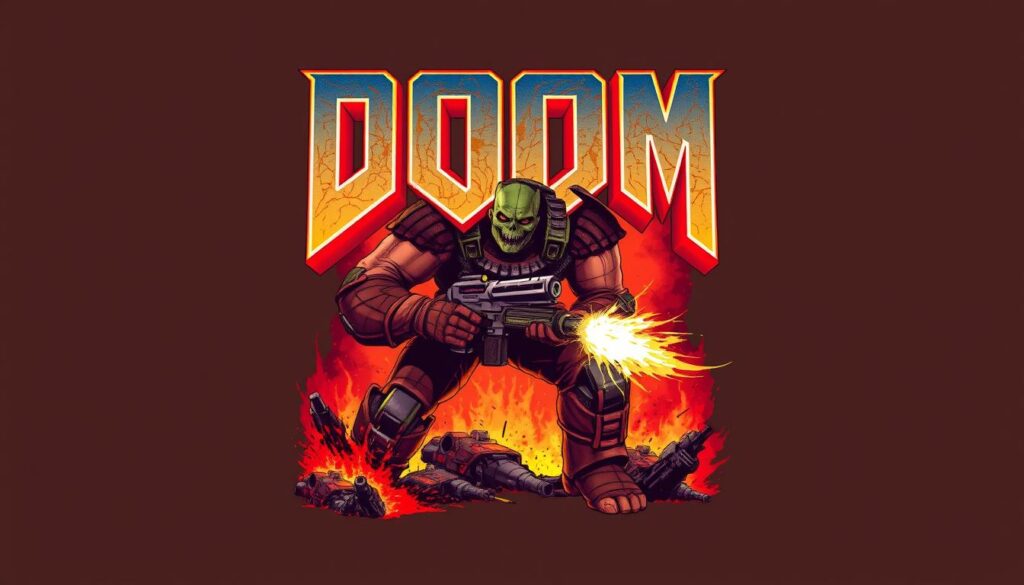
In 1993, id Software changed the gaming landscape forever with the release of Doom. This groundbreaking game not only popularized the first-person shooter genre but also set a new standard for fast-paced action and multiplayer gaming.
Pioneering First-Person Shooters
Doom was a pioneering FPS that helped define the genre. Its influence on subsequent games was profound, with many drawing inspiration from its design and gameplay mechanics. The game’s fast-paced action, coupled with its intense multiplayer mode, helped establish it as a classic.
Modding Community and Lasting Impact
The modding community around Doom has been particularly significant, contributing to its enduring popularity. Players could modify the game to create new levels, characters, and game modes, extending its replay value. Doom’s legacy extends beyond its own series, influencing many other FPS games and helping to popularize online multiplayer gaming.
Today, Doom remains a beloved classic among gamers, with a continued following and influence on the gaming industry.
Street Fighter II (1991)

The impact of Street Fighter II on the fighting game genre cannot be overstated. Released in 1991, it not only elevated the standards of arcade gaming but also brought about a revolution in competitive gaming.
Arcade Perfection Comes Home
Street Fighter II was a landmark fighting game that perfected the genre, introducing a variety of characters with unique abilities and special moves. Its transition to home consoles was highly anticipated, and it successfully brought arcade-quality gaming to living rooms.
The game’s release on home consoles was a significant milestone, making its innovative gameplay accessible to a wider audience and cementing its place in gaming history.
Competitive Gaming’s Early Days
Street Fighter II played a pivotal role in shaping competitive gaming. It helped establish fighting games as a major esports genre, with its intuitive yet complex gameplay that appealed to both casual and professional players.
The legacy of Street Fighter II continues to influence modern fighting games, with many titles drawing inspiration from its design and gameplay mechanics. As a cultural phenomenon, Street Fighter II remains a beloved classic among gamers and competitive players, symbolizing the golden era of gaming.
Pokémon Red and Blue (1996)
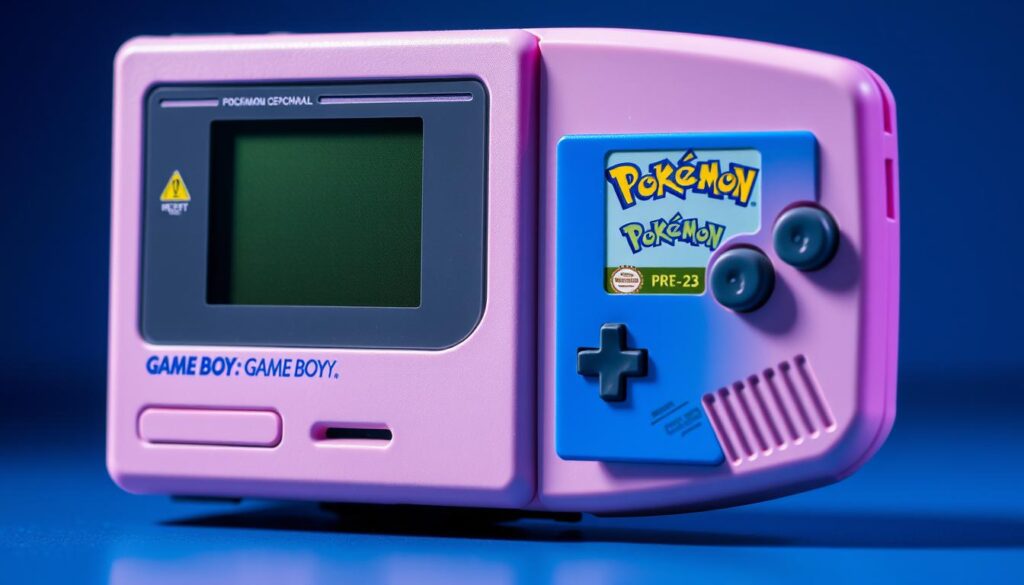
The year 1996 saw the debut of Pokémon Red and Blue, games that would go on to achieve unparalleled success. These pioneering games introduced the Pokémon franchise to a global audience, captivating the hearts of gamers worldwide with their innovative concept and engaging gameplay.
The impact of Pokémon Red and Blue was immense, turning the franchise into a global phenomenon. The games’ release on the Game Boy brought the concept of catching and training creatures to the forefront, creating a cultural sensation that transcended the gaming community.
Creating a Global Phenomenon
Pokémon Red and Blue were more than just games; they were the beginning of a global movement. The franchise’s innovative concept and charming characters helped establish a massive following, making it a cultural icon of the 90s.
Gameplay That Transcended Generations
The gameplay mechanics introduced in Red and Blue have remained influential, with the concept of catching and battling Pokémon continuing to be a core part of the franchise. The games’ legacy can be seen in the numerous sequels, spin-offs, and adaptations that have followed.
Metal Gear Solid (1998)

The year 1998 marked the release of Metal Gear Solid, a game that would change the stealth genre forever. Metal Gear Solid was a landmark stealth action game that set a new standard for the genre. Its cinematic storytelling and immersive gameplay helped establish it as a classic.
The game’s influence on the stealth genre has been significant, with many games drawing inspiration from its design. The complex story and memorable characters have become iconic in gaming culture.
Cinematic Stealth Action
Stealth action was taken to new heights with Metal Gear Solid’s innovative gameplay mechanics. The game’s emphasis on strategy and stealth over brute force raised the bar for future titles.
Players were required to think creatively, using shadows, radar, and other tools to evade detection. This level of depth added a new layer of complexity to the genre.
Kojima’s Storytelling Revolution
Hideo Kojima’s direction brought a new level of cinematic storytelling to the series. The game’s narrative was layered with complex themes and characters, setting a new standard for storytelling in games.
The characters in Metal Gear Solid, from Solid Snake to Liquid Snake, were multidimensional and memorable, contributing to the game’s lasting impact.
Resident Evil (1996)

Capcom’s Resident Evil, launched in 1996, revolutionized the gaming industry with its unique blend of horror and gameplay. This pioneering survival horror game set a new standard for the genre, captivating players with its tense atmosphere and challenging puzzles.
The game’s influence on the survival horror genre has been significant, with many subsequent games drawing inspiration from its design and mechanics. Resident Evil introduced a new level of fear and tension to gaming, making it a beloved classic among gamers.
Defining Survival Horror
Resident Evil is often credited with defining the survival horror genre. Its innovative gameplay mechanics, such as limited resources and tank controls, created a sense of vulnerability and fear, immersing players in a terrifying experience. The game’s focus on survival and evasion rather than straightforward combat added to the tension, making it a landmark title in the genre.
The impact of Resident Evil on the survival horror genre can still be felt today, with many modern games paying homage to its pioneering gameplay and atmospheric design.
Atmosphere, Puzzles, and Zombies
The Resident Evil experience is characterized by its creepy atmosphere, challenging puzzles, and iconic zombies. The game’s use of pre-rendered backgrounds and 3D character models created a haunting and immersive environment, drawing players into a world of horror. The puzzles, often cryptic and challenging, added to the sense of tension and survival, making the game a true classic.
The combination of atmosphere, puzzles, and zombies in Resident Evil has become a hallmark of the series, influencing countless other horror games and cementing its place in gaming history.
StarCraft (1998)
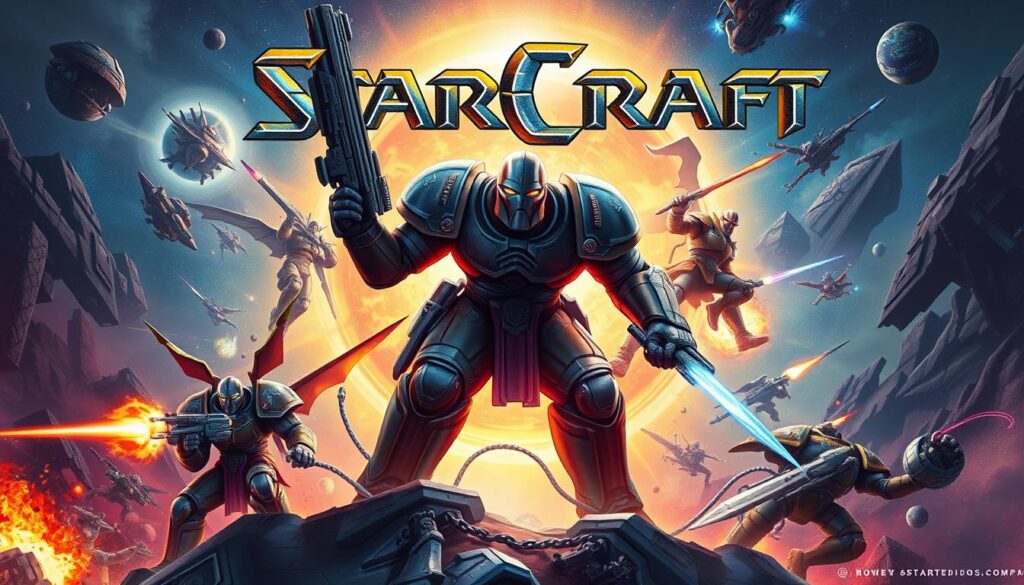
The year 1998 marked the release of StarCraft, a landmark title that would go on to shape the future of competitive gaming. As a groundbreaking RTS game, it set a new standard for competitive play and engaging multiplayer modes.
Perfect RTS Balance
StarCraft achieved a perfect balance between its three unique factions: the Zerg, Protoss, and Terrans. This balance was crucial in establishing the game as a classic, as it ensured that no single faction had an unfair advantage, promoting competitive gameplay.
The game’s design and balance have been studied and emulated, contributing significantly to the evolution of the RTS genre.
The Birth of Esports
StarCraft played a pivotal role in the birth and growth of esports. Its competitive multiplayer mode and balanced gameplay made it an ideal title for tournament play, helping to establish RTS games as a major competitive genre.
The game’s influence on esports extends beyond its own series, contributing to the broader competitive gaming landscape.
GoldenEye 007 (1997)

With its release in 1997, GoldenEye 007 marked a significant turning point in the history of console gaming, particularly in the FPS genre. This game was a groundbreaking console FPS that not only captivated gamers with its engaging storyline and immersive gameplay but also revolutionized the way people played games together.
GoldenEye 007 was a pioneering title that set a new standard for console FPS games. Its influence on the genre was profound, with many subsequent games drawing inspiration from its design and mechanics. The game’s success can be attributed to its well-balanced gameplay, intuitive controls, and most notably, its innovative multiplayer mode.
Console FPS Revolution
The game’s impact on the console FPS genre was significant. GoldenEye 007 showed that FPS games could be just as enjoyable on consoles as they were on PCs, paving the way for future FPS titles. Its influence can be seen in many subsequent console FPS games that adopted similar gameplay mechanics and controls.
Multiplayer That Changed Everything
GoldenEye 007’s multiplayer gaming mode was a game-changer. The introduction of split-screen multiplayer brought a new level of excitement and competitiveness to console gaming. It allowed friends and family to play together in the same room, creating a unique social experience that became a hallmark of the game.
The legacy of GoldenEye 007 extends beyond its own series, contributing to the broader evolution of FPS games and multiplayer gaming as a whole. Its influence can still be felt today, with many considering it a classic that continues to be enjoyed by gamers around the world.
Honorable Mentions: Other Top 10 Games in 90s That Almost Made the List
The 1990s were a vibrant time for gaming, with many incredible titles that, while not in the top 10, remain noteworthy. This era was marked by significant innovation and diversity across various genres, contributing to a rich gaming landscape.
Several games stood out for their excellence, even if they didn’t make it to the top 10 list. These titles not only showcased the talent and creativity of developers but also played a crucial role in shaping the gaming industry.
Chrono Trigger and Final Fantasy VI: JRPG Excellence
Games like Chrono Trigger and Final Fantasy VI exemplified the excellence of JRPGs during the 90s. Chrono Trigger is still celebrated for its engaging story, memorable characters, and innovative battle system. Similarly, Final Fantasy VI pushed the boundaries of storytelling and character development in RPGs.
Sonic the Hedgehog and Donkey Kong Country: Platform Perfection
The 90s were also a golden era for platformers, with Sonic the Hedgehog and Donkey Kong Country leading the charge. Sonic the Hedgehog became an iconic character, symbolizing speed and coolness, while Donkey Kong Country revolutionized the genre with its pre-rendered 3D graphics and challenging gameplay.
Half-Life and Quake: FPS Innovation
In the realm of First-Person Shooters, Half-Life and Quake were pioneers, pushing the boundaries of what was possible in the genre. Half-Life is renowned for its immersive storytelling and engaging gameplay, while Quake introduced 3D graphics and multiplayer capabilities that became industry standards.
These games, among others, contributed to the richness and diversity of ’90s gaming, leaving a lasting legacy that continues to influence the industry today.
The Legacy of 90s Gaming: How These Classics Shaped Today’s Industry
The legacy of 90s gaming continues to be felt, with many of its innovations still influencing game development today. The decade’s impact on the gaming industry can be seen in various aspects, from the resurgence of classic titles to the ongoing evolution of gameplay mechanics.
One of the most visible signs of the 90s gaming legacy is the proliferation of modern remakes and remasters. Many iconic games from the decade have been re-released with updated graphics and gameplay, introducing them to new audiences and demonstrating their enduring appeal. This trend not only satisfies nostalgic gamers but also allows new generations to experience the classics that shaped the industry.
Modern Remakes and Remasters
The practice of remaking and remastering classic games has become increasingly popular, with titles like The Legend of Zelda: Ocarina of Time and Final Fantasy VII receiving high-profile re-releases. These remakes often update the originals with modern graphics and controls, making them more accessible to contemporary gamers while retaining the essence of the original experience.
Gameplay Elements That Endure
Beyond remakes and remasters, the gameplay elements pioneered or popularized during the 90s continue to influence modern game design. The innovations of the decade, such as 3D platforming and immersive storytelling, have become staples of the industry. Many modern games draw inspiration from 90s classics, ensuring that their legacy endures and continues to shape the future of gaming.
Conclusion
As we reflect on the top 10 games of the ’90s, it’s clear that these titles not only defined a decade but also shaped the future of gaming. The ’90s were a pivotal time for the industry, marked by significant technological advancements and innovation.
The games highlighted in this article showcase the diversity and creativity of the decade, from 3D platformers and JRPGs to FPS games. These iconic titles have had a lasting impact on the industry, influencing many subsequent games and continuing to be celebrated by gamers today.
The legacy of ’90s gaming is still felt today, with many classic games remaining beloved and influential. The focus on creativity and innovation during this period laid the groundwork for the industry’s future growth and diversity, making the top 10 games in 90s a testament to the decade’s significance in gaming history. In conclusion, the impact of these games continues to be felt, shaping the gaming landscape for generations to come.
FAQ
What made the 90s a golden era for gaming?
The 90s saw significant advancements in technology, leading to the transition from 2D to 3D graphics, and the introduction of iconic franchises and characters that still influence the industry today.
Which game is often credited with revolutionizing 3D platformers?
Super Mario 64 is widely regarded as a pioneer in 3D platforming, introducing innovative camera controls and 3D gameplay mechanics that have been built upon by numerous other titles.
What impact did Final Fantasy VII have on the JRPG genre?
Final Fantasy VII played a crucial role in popularizing JRPGs worldwide, thanks to its engaging story, memorable characters, and cinematic presentation, which raised the bar for storytelling in video games.
How did Resident Evil contribute to the survival horror genre?
Resident Evil helped define the survival horror genre by introducing tank controls, fixed camera angles, and an emphasis on resource management, creating a sense of tension and fear that has been emulated by many other horror games.
What was the significance of Street Fighter II in the evolution of fighting games?
Street Fighter II is considered a landmark title in the fighting game genre, introducing combos, special moves, and a variety of playable characters, which became a standard for future fighting games and competitive gaming.
How did the 90s influence modern gaming?
The innovations and iconic games of the 90s have had a lasting impact on the industry, with many modern titles paying homage to or building upon the foundations laid by classic games from this era.
Are there any other notable games from the 90s that are worth mentioning?
Yes, other notable mentions include Chrono Trigger, Donkey Kong Country, Sonic the Hedgehog, and GoldenEye 007, among others, which have all contributed to the rich gaming heritage of the decade.
What is the legacy of 90s gaming in today’s industry?
The legacy of 90s gaming can be seen in modern remakes, remasters, and the continued influence of classic gameplay elements, demonstrating the enduring impact of this pivotal decade on the gaming industry.
